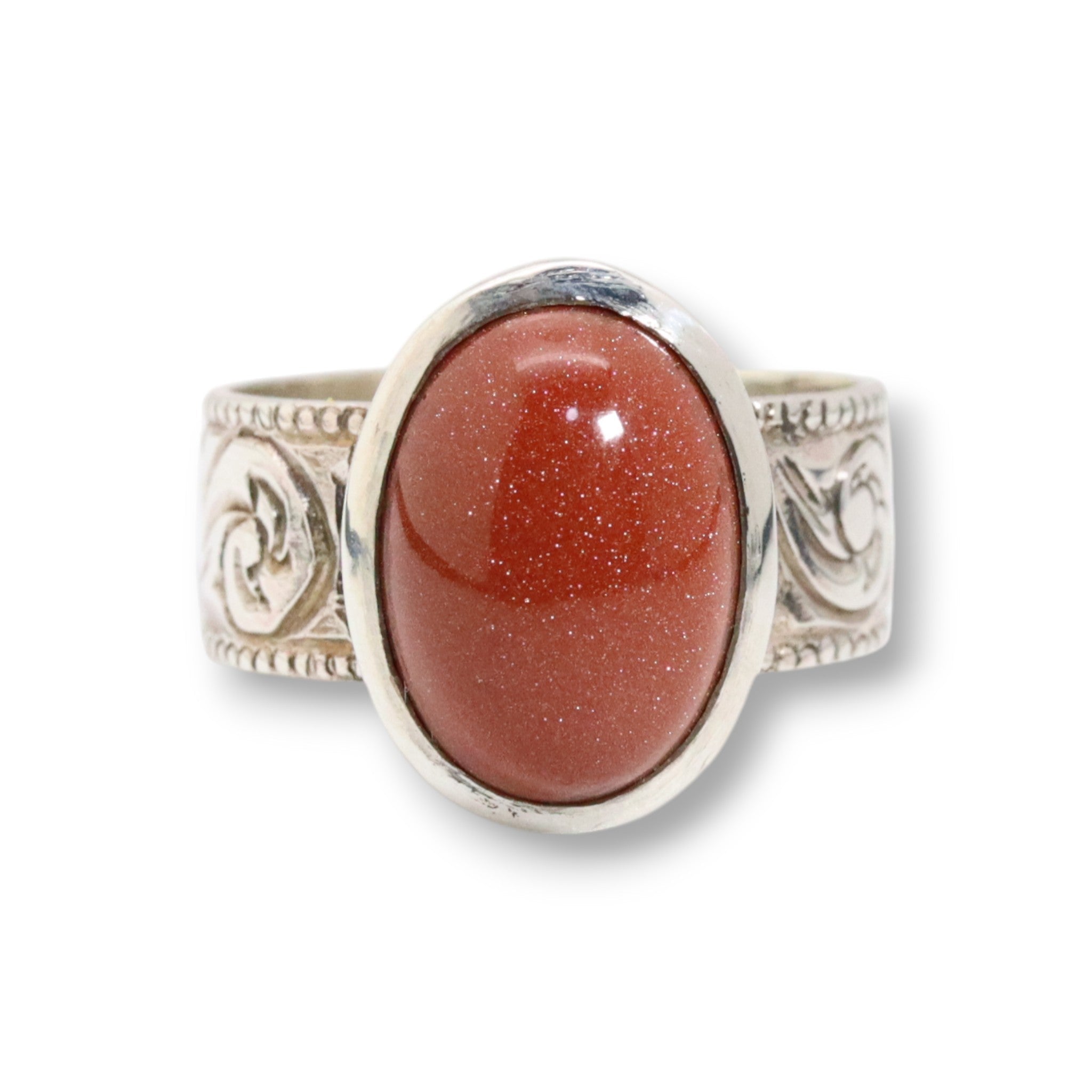
Article: Chakinseki (Goldstone) - A synthetic gemstone born from glass crafts

Chakinseki (Goldstone) - A synthetic gemstone born from glass crafts
What is Chakinseki? Definition and Name

"Chakinseki" refers to the man-made material commonly known as Goldstone or Aventurine glass .
Its appearance is shiny, as if it were sprinkled with metal powder, but it is not a natural mineral; it is an artificial stone made by mixing metal crystals with glass .
In Japanese, the dictionary also defines it as "a brown mineral containing hematite and mica in quartz," but the chakinseki sold in the fields of jewelry and crafts is clearly distinguished as being made from artificial glass .
Material and structure - metallic luster in glass
The main component of Chakinseki is soda-lime glass , with fine copper crystals evenly dispersed within it, giving it a luster similar to that of gold dust.
This structure causes metallic light to reflect inside the glass, causing the shine to change depending on the viewing angle.
- Main component: SiO₂ (glass matrix)
- Metals included: Copper or cobalt chromium (color change)
- Mohs hardness: Approximately 5.0 to 6.0
- Crystal structure: amorphous (glass)
The typical color is brown (with copper), but there are many other variations, including blue and green.
Origins - Inventions of Murano, Venice
Chakinseki originated in Venice, Italy in the 17th century .
It is said that aventurine glass was created when a craftsman on the island of Murano , known for its Venetian glass, accidentally dropped copper shavings onto glass, and the name aventurine glass was derived from this coincidence ( avventura in Italian).
It is well documented that this technique was exclusively produced by the Miotti family of Murano artisans and was long kept secret.
Chakinseki in decorative culture
The Venetian glass industry has supported European decorative culture since the 13th century.
Chakinseki is also part of this trend and has been incorporated in the following ways:
- Murano glasswork and bead materials
- Carved ornaments, brooches, pendants
- Jewelry and interior decoration from the 19th century onwards
At that time, glass craftsmen worked under state control, keeping their techniques secret, and their technique of imbuing glass with a metallic glow was highly praised as an innovative decorative method.
The term "Chakinseki" in Japan
In Japanese dictionaries, Chakinseki is described as "a brown stone that shines like gold dust sprinkled on it," and examples of it being used as an ornamental material for hairpins and ornamental pins can be seen.
However, almost all of the "chakinseki" currently on the market is artificial glass goldstone , and is different from the natural mineral chakinseki (quartz-based).
Relationship with ancient culture
Goldstone (aventurine glass) is a 17th century invention, so there is no evidence that it has been used since ancient Greece or Rome .
In ancient times, natural aventurine (quartz) and sunstone, which have a similar brilliance, were used as ornaments, so it is correct to treat them separately from goldstone.
Modern use and design value
In modern times, Chakinseki is widely used for the following purposes:
- Inlay materials for engraving and silver accessories
- Jewelry components such as beads and cabochons
- Craft glass object production
- Reproduction of traditional Venetian glass
Although it is an artificial material, it is valued for its warm metallic glow and uniform luster , and has maintained a certain position in modern crafts that seek a ``stable shine'' different from that of natural stone.
summary
| item | Content |
|---|---|
| material classification | Artificial glass containing copper metal crystals (non-mineral) |
| Origin | Venice (Murano Island), Italy, 17th century |
| Origin of the name | “avventura” → Aventurine glass |
| exterior | Brown glass with scattered metallic glitter |
| Main uses | Glasswork, accessories, and craft decorations |
| Points to note | It is different from the natural mineral "Aventurine" |


